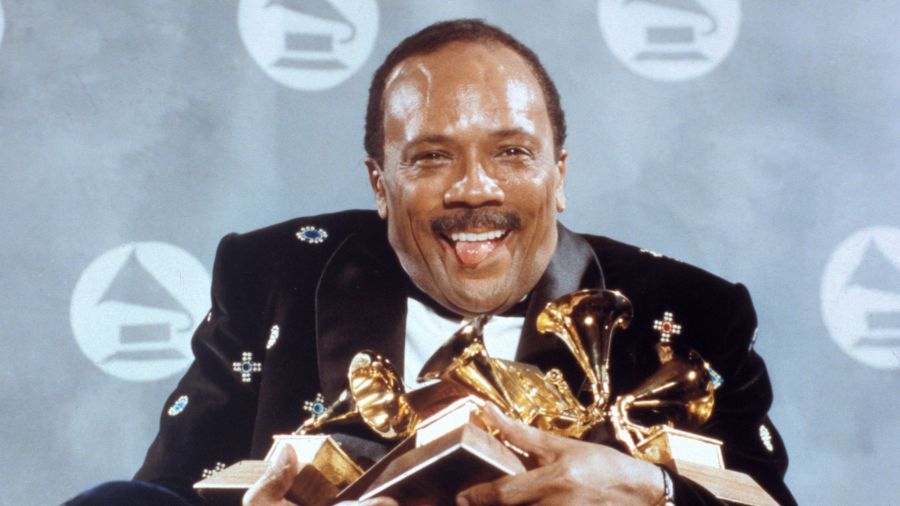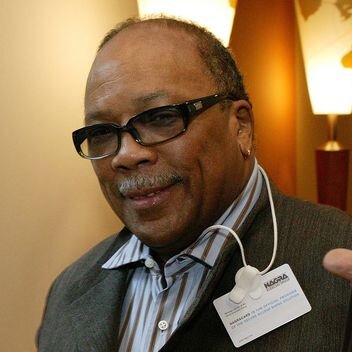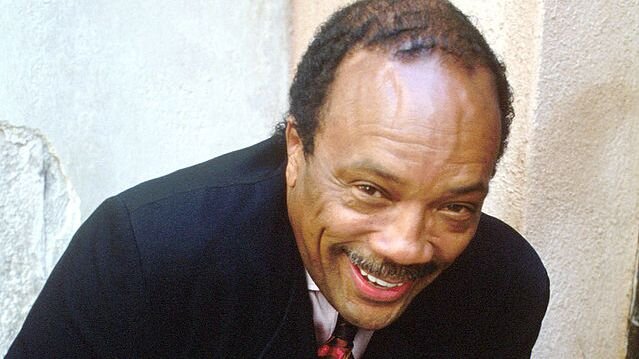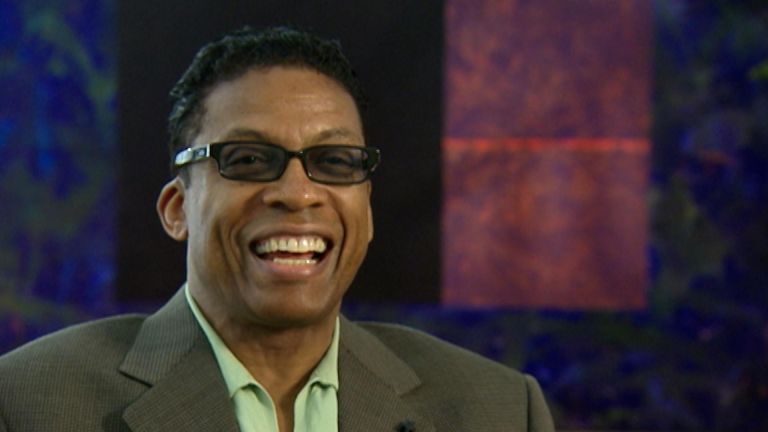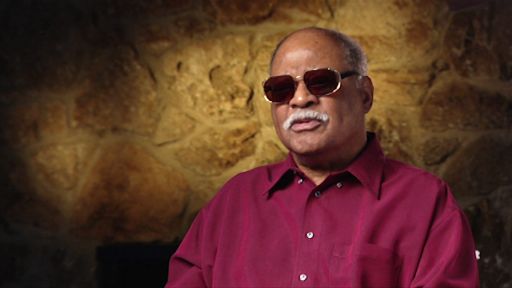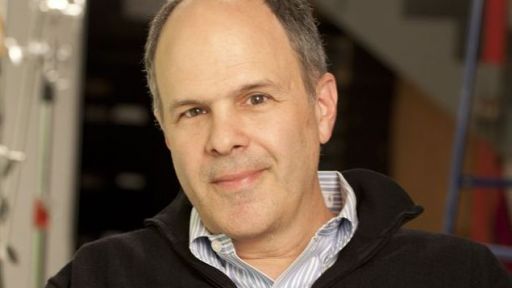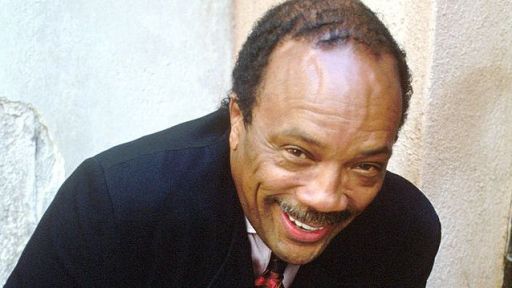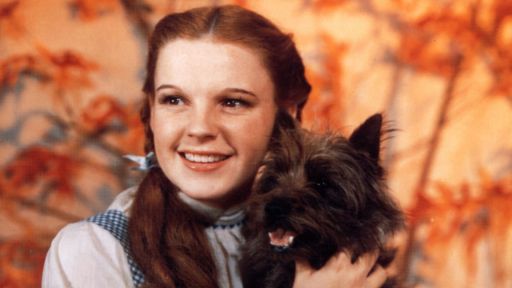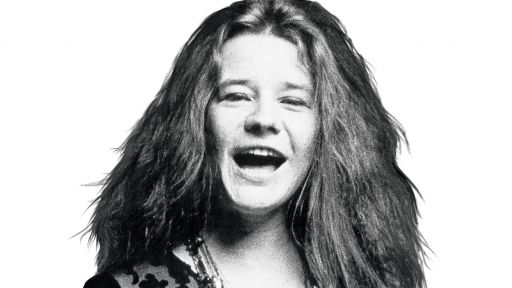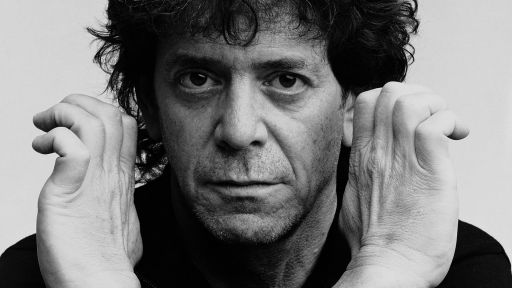PART I: THE LIGHTNING STRIKE OF EGO
In the opening paragraph of his monumental essay on the first Ali-Frazier fight, Norman Mailer calls ego “the great word of the twentieth century.” But the magnitude of ego has long endured. Ego has probably been the great term for all human centuries, even before Freud invented the concept; for ego is the engine that drives human achievement, and, as Mailer wrote, “gives us authority to declare we are sure of ourselves when we are not.” Ego is the great cauldron of confidence, the design of daring.
Still, Mailer has a point about the 20th century, the American Century. What society has so defined itself by the power of its inner desire, by its own yearning to accommodate the fantasies and impulses of its citizens? There is no French Dream, or Russian Dream, or African Dream, or British Dream, but everyone the world over knows about the American Dream. America is the place to come, so the myth goes, to get what the ego wants, to fulfill the longings of the self.
No other period has given the ego bigger stages or platforms upon which to realize itself and its ambitions than the American century. And one of those outlets is American popular culture, the great circus, bazaar, and shell game of diversions and pastimes, the vast populist prairie and New World frontier of cheap yet captivating entertainment and mass-appeal art. Popular culture is where the leveling and liberating impulses of democracy and the voraciousness of capitalism meet to produce the sublime and the ridiculous. And there, African Americans have vaunted their egos and made their psychic need for expression and their unwavering cry for justice and power reverberate around the country and across the globe. In American popular culture, Quincy Delight Jones, Jr.-African American, musician, entrepreneur, handsome ladies’ man, and American dreamer-has become one of the realm’s grand princes, a monarch of all he surveys. And his success, his rise to greatness, is as much the result of ego as of the immensity of his talent.
As music critic Nelson George points out, “. . . along with Miles Davis, [Quincy Jones] is the only survivor of the bebop era who has stayed contemporary and continued to have an impact on today’s music.”
This is highly unusual for any musician. Most enter music emotionally and professionally at a young age and play the kind of music they explored then for the rest of their lives, either with small variations to acknowledge the passage of time or with none at all. The reason for this has a great deal to do with the inability of most people, even musicians, to listen to, let alone absorb and perform, a wide variety of music. Moreover, musicians who begin playing a kind of music when they form their identities as adults often continue to perform this type because it is so intricately and intimately tied to their sense of self when they reached that pivotal stage in life. And not only is it difficult emotionally and psychologically to play many widely different forms of music, but it is difficult technically as well-insecurities about limitations can bind even the most impressive player to a certain style.
It takes an extraordinary amount of ego, or perhaps an extraordinary kind of ego, for a musician (or any artist) to think that he can influence his field over a period of several decades and learn to handle new expressions and aesthetic possibilities with the same ease as he did in his youth-that he can learn, in short, to speak to new audiences in their own tongues. And few musicians have the temerity to endlessly impose their will on any material at hand; to shape the world, artistically, not only on any terms but in any terms.
It is interesting that of the beboppers who emerged after World War II only Miles Davis and Quincy Jones survived as major musical presences with fresh ideas beyond the age when anyone would have expected it of them.
The careers of both men, in fact, ran parallel to each other, but in different directions. Davis, like Jones, a trumpeter, moved from style to style in jazz, from bebop to cool to a sort of semi-avant-garde in the 1960s to a kind of rock-funk sound in the 1970s that was mostly a furious and sometimes undisciplined extension of the avant-garde ideas he had been experimenting with. He was enormously attracted to youth, and when he became older, his sidemen continued to be young. In addition, Davis displayed his ego by being something of a disaffected exhibitionist and a street-oriented misanthrope, stances that he managed to make appealing and hip, rather than psychopathic and infantile (which, in some measure, they were), by infusing them with racial angst and masculine aggression. He was an extraordinarily proud black man but to some a disagreeable one. However, he never ceased to be a jazz musician, a soloist, a man consumed with the nature and meaning of his own sound.
“All the musicians moan about the level of American popular music,” said Quincy Jones to Gene Lees in an article that appeared in Down Beat in 1960, “but all they do is moan about it. They wouldn’t think of going into it to improve it. Well, I’m going into it. I don’t want my band advertised as a jazz band, even though it is. I don’t want to scare the kids off. I want to try to do something about popular music.” And he was true to his word.
Jones moved through various forms of popular music-not jazz-from swing to bebop to rhythm & blues to television and movie scoring to pop to soul to hip-hop.
Jones was straddling different but related styles of music from the very beginning, when he was teenager. As he told Josef Woodard in a 1990 Down Beat interview:
When I was 14 years old and Ray Charles was 16, our average night went like this: We played from seven to 10 at a real pristine Seattle tennis club, the white coats and ties, [playing] ‘A Roomful of Roses’ . . . From 10 to about one o’clock, we’d go play the black clubs: the Black and Tan, The Rocking Chair, and The Washington Educational and Social Club-which is a funny name, funkiest club in the world. We’d play for strippers and comedians and play all the Eddie “Cleanhead” Vinson and Roy Milton stuff, all that r&b. It was a vocal group. Then, at about 1:30 or 2 a.m., everybody got rid of their gigs and we went to the Elks Club to play hardcore bebop all night long . . .
https://pbs-wnet-preprod.digi-producers.pbs.org/wnet/americanmasters/archive/interview/gerald-early/
Jones never lost his love for a broad swath of African American popular music or his interest in wanting to play it, and this had a considerable impact on the shape of his career and the nature of his artistic ambitions.
He was also not afraid to leave that form of music entirely and compose and arrange programmatic music that had no particular aesthetic connection to African American music. And he was fortunate to have had that opportunity. In addition, he did something only few other well-known jazz musicians have ever done-he made a name for himself in the production of sometimes highly artistic, avant-garde, and often blatantly commercial music or music for blatantly commercial enterprises, such as film and television. (Louis Armstrong, Fats Waller, Nat Cole, George Benson, and Duke Ellington also produced commercial music, but Armstrong, Waller, and Ellington were commercially viable when jazz was still popular. When Jones was young, jazz no longer had a mass audience; it had evolved into an esoteric music.)
In the end, Quincy Jones became more than just a player. He probably would have never had the same impact on modern American music had he remained only a trumpeter. Though competent on the instrument, he could not attain the virtuosic heights of the players he most admired: Dizzy Gillespie, Clark Terry, Fats Navarro, Art Farmer, and, especially, Clifford Brown.
Instead, Jones became an arranger and composer.
Had he only stopped there and worked strictly in jazz, he may have become someone like Bill Challis, the legendary arranger behind the Paul Whiteman sound; or Billy Strayhorn, Duke Ellington’s right arm; or Gerald Wilson, the eminent West Coast bandleader. All of these men were brilliant, but none were household names. In the end, Jones’ film and television writing exposed him in another way beyond what either Strayhorn or Wilson could have achieved. If he had stayed strictly in the realm of film music, though, he may have achieved the eminence of Nelson Riddle or Henry Mancini or Elmer Bernstein. But Jones, in his crusade to have an impact on popular music, became a producer and a record-industry mogul. By shifting not merely the context in which he wished to play but also the way he functioned within the music world, he made it much easier for himself to become a renaissance man in popular culture. As Stan Kenton’s arranger Bill Mathieu perceptively observed, “Quincy Jones is, both by his own description and by the nature of his music, a culminator rather than an innovator. His music contains nothing new; rather, it contains nearly everything of value that has been done before.”
In short, Jones took the music around him and, to use Mathieu’s definition, restated it more completely than it had been done before.
When Jones produced Lesley Gore’s 1963 teen hit, “It’s My Party,” he did not, as Nelson George asserts, “[invent] soap-opera pop.” After all, The Everly Brothers’ “Wake Up Little Susie” and “Bye Bye Love,” Johnny Mathis’ “Gina” and “What Will Mary Say,” The Shirelles’ “Soldier Boy” and “Mama Said,” and Dion And The Belmonts’ “A Teenager In Love” had already established the genre. What Jones did with Gore was give everything that had gone before greater technological polish and resonance. Thus, “It’s My Party” is a culminating record, not an innovative one.
What is perhaps even more striking is that Jones achieved mass success with a white pop sound, a white singer, and with white audiences. In this way, he was an innovator. In fact, in the totality of his talent and in his daring to break down barriers and move across boundaries, Jones may very well be one of the most innovative people in the history of American popular music. It is hard to imagine anyone in America, regardless of age or background, not knowing some piece of music that he has either arranged, produced, or composed. There are few people in music about whom this can be said.
https://pbs-wnet-preprod.digi-producers.pbs.org/wnet/americanmasters/archive/interview/maya-angelou/
“I once asked him,” wrote Gene Lees about Quincy Jones, “why there had been so few hassels [sic] in his life. He said he didn’t know. And then, after thinking about it a moment, he added: ‘It is probably because I never do anything, never make a move or an advance in my career, until I am ready and prepared for it.'” The care with which Jones has made his moves grants his career a sense of inevitability that detracts from the hassles he has encountered and diminishes the propulsive power of the ego that drives him. Miles Davis made an arrogant demeanor and a kind of demonstrative and apparent egotism his stock-in-trade, his myth of evil hipness, if you will. Part of Jones’ success is also linked to his personality, but in a very different way: Others have always found him accessible and warm, “a beautiful cat,” to use his own favorite phrase about others he likes. He has the reputation of an enabler, a nurturer, a cultivator, a deeply personable and devilishly charming man, with an enormous capacity for exhausting stints of concentrated work and endless rehearsals. As he once told Zan Stewart in a 1985 Down Beat article:
Most of the time I try to put a musician in a situation where he should be comfortable. But there are times, like the world’s greatest guitarist who couldn’t read. You put him in a situation with 44 players, and there’s a psychological tendency to freak out. I used to have that problem with Basie. I mean, he’d see seven sharps and head for the bathroom. But it doesn’t matter, man, because there are guys who can read around the corner who couldn’t touch Basie with two notes he’d play. So once the musician learns to trust me, learns that he can go without the net, that I won’t let him fall, we have a great time.
https://pbs-wnet-preprod.digi-producers.pbs.org/wnet/americanmasters/archive/interview/quincy-jones-interview-1/
Such admissions make his ego seem, in essence, invisible or transparent. But there is a certain subtlety in the mind and heart of Quincy Jones.
Take, for instance, the historic 1985 recording session he helped put together and produce to generate funds for famine relief in Ethiopia. Inspired by Bob Geldof’s Live Aid show, the recording of “We Are The World,” a song written by Michael Jackson and Lionel Richie, was one of the most unique moments in popular music, with participating stars ranging from Bruce Springsteen and Bob Dylan to Diana Ross and Willie Nelson to Stevie Wonder and Tina Turner. It spawned further popular humanitarian/pop-culture events like Hands Across America, Farm Aid, and Comic Relief. “We had only ten hours to do the whole thing,” Jones said about the recording in a 1990 Playboy interview, “and we had to get it right in one session, because there wasn’t going to be a second one. Lionel [Richie] and Michael [Jackson] and I knew all the things that could go wrong, so we planned it right down to where everybody would be standing and where every microphone would be positioned so that we’d pick up each voice distinctly. And we didn’t know what to expect with all those egos in the same room together. But they must have checked them at the door, because the mood in the studio was like a living embodiment of the idea behind the song.”
The gathered egos and Jones’ ability to subdue and accommodate them became the event’s story in the press, making him seem egoless. But only someone with staggering confidence and ego would have ever attempted such a project. To the millions watching, Jones seemed to be the center of the “We Are The World” session and the others mere satellites. Jones, of course, had experienced more deeply satisfying moments in his career-surely less stressful ones-but for that event the world saw all of popular music assembled before one man as he literally and symbolically orchestrated the entire ensemble. “All men dream,” T. E. Lawrence wrote so strikingly, “but not equally.” And very few, as Lawrence suggested, except the most ego-driven, ever realize their dreams.
https://pbs-wnet-preprod.digi-producers.pbs.org/wnet/americanmasters/archive/interview/sidney-lumet-2/
Jones, as a youngster, wrote a poem about composing. The last stanza read:
But as a composer dreams on and on
And his dreams are hopeless it seems
Even if the people don’t listen
He can always thank God for his dreams
For Jones, or any serious composer, dreaming is not enough. A composer must become good enough and important enough so that he can find a group of musicians who will play his music. And to become that important and that good in a commercial sense means that a composer must have a sufficient audience to make it worth someone’s while to pay for it. Jones could not escape the hard facts of commerce that surround the production of any art, but unlike many jazz musicians, he did not deplore them, rail against them, or pity himself because money wagged the dog’s tail more than merit or good taste. He chose to use this situation to become what he wanted to become, to obtain sufficient power and prestige so that he could have artistic freedom. This is an act of supreme ego. Some do dream in the hard light of day, and these are the individuals who accomplish their ends. Jones is such a person.
Jones has asserted his ego not by making a myth or cult of his personality, as some great musicians have done, but by making a myth of the ubiquity of his presence in the diverse aspects of music-making. He is not a man consumed by his own sound, but by the transformative and organizational power of musical sound itself. After all, as Jones said about music in a 1995 Ebony article, “it’s only 12 notes.” But in that dozen Jones found endless diversity, whimsy, liberation, the whole range of human expressive possibility. “Art and nothing but art!” philosopher and composer Friedrich Nietzsche cried in The Will To Power, “It is the great means of making life possible, the great seduction to life, the great stimulant of life.” Quincy Delight Jones, Jr., discovered that as a child.
“. . . for in the United States when traditions are juxtaposed they tend, regardless of what we do to prevent it, irresistibly to merge. Thus, musically at least each child in our town was an heir of all the ages. One learns by moving from the familiar to the unfamiliar . . .” -Ralph Ellison, “Living With Music”
“Negro music is always RADICAL in the context of formal American culture.” -LeRoi Jones, Blues People
PART II: TO SEATTLE, TO NEW YORK, TO EUROPE, TO HOLLYWOOD
Quincy Jones was born on the South Side of Chicago on March 14, 1933. The South Side was the tough black ghetto of one of America’s biggest cities, the city of Carl Sandburg and Richard Wright. By 1933 America was steeped in the Great Depression, and Quincy and his younger brother, Lloyd, learned to survive during those lean times the way many kids did: by stealing, carrying weapons, playing hooky, and running around with street gangs.
Like millions of other blacks since around 1915, his parents had come up from the South to make a better life for themselves in the North, where Jim Crow restrictions against African Americans were not quite so rigid and where burgeoning industrialization meant more employment opportunities, especially since the nation had limited European immigration. But like the South, the North had its share of racial violence, particularly right after World War I, a period referred to by historians as “the Red Summer” of 1919. In fact, Chicago experienced one of the worst race riots of the century that summer. These riots were typified by marauding gangs of whites-aided by the police-killing or maiming any blacks they saw and burning down black neighborhoods. Certainly, coming North was no journey to Dreamland for African Americans, but it was the start of a change that was to gather momentum and create profound political and social change in American life in the years ahead.
https://pbs-wnet-preprod.digi-producers.pbs.org/wnet/americanmasters/archive/interview/benny-carter/
Migrating North made it possible for African Americans to create vigorous political and artistic movements and to affect the growing popular culture of entertainment much more directly than they would have had they remained almost exclusively in the South. By the time Quincy Jones was born, the NAACP-the oldest and in many respects the most radical interracial organization dedicated to civil rights in this country-had been in operation for over 20 years, and the editor of its magazine, The Crisis, was one of the foremost intellectuals of his time, W. E. B. Du Bois. Writers such as Claude McKay, Langston Hughes, Jessie Fauset, Countee Cullen, Nella Larsen, and intellectuals like Charles S. Johnson, Alain Locke, and James Weldon Johnson had spawned a literary movement that became known as the Harlem Renaissance. Marcus Garvey had galvanized blacks with his Universal Negro Improvement Association and his cry of “Africa for the Africans.” Du Bois, meanwhile, had organized Pan-African conferences in Europe in 1919, 1921, 1923, and 1927, in an effort to combat European colonialism. Jazz had become so popular in the 1920s that F. Scott Fitzgerald, one of the period’s key writers and famous personalities, dubbed the decade the Jazz Age.
But African Americans also made their presence felt on the Broadway stage and in a music, mostly dominated by women singers, called the blues.
The ’20s saw the emergence of Armstrong, Ellington, Fletcher Henderson, and Sidney Bechet, as well as Ethel Waters, Bessie Smith, Josephine Baker, and Florence Mills. There was Eubie Blake and Noble Sissle, Clarence Williams and W.C. Handy, Ida Cox, and a popular lesbian performer named Gladys Bentley. There were parties at the mansion of A’Lelia Walker, the daughter of Madame C. J. Walker, who made her fortune selling black women’s hair care products. And there were mass protests against lynching.
Paul Robeson was the major star of the period, having appeared in Eugene O’Neill’s The Emperor Jones and All God’s Chillun Got Wings. Butterbeans and Susie were the rage, and a young comedienne named Jackie Mabley was knocking ’em dead.
In addition, the year Jones was born, staunch socialist A. Philip Randolph, former publisher of The Messenger and considered by the U.S. Justice Department to be the most dangerous Negro in post-World War I America, was fighting to keep his union-the Brotherhood of Sleeping Car Porters and Maids-together and to gain recognition from the Pullman Company.
Quincy Jones was born during the Depression but right at the end of the New Negro Movement. He might never have heard of it-or of the people who made it possible-but those individuals’ lives made a profound difference in the options and possibilities he would experience in his own life.
Matters did not work out well for Quincy’s parents in Chicago. His mother, a musically talented Christian Scientist, began to suffer from severe headaches and spells of irrational behavior that eventually landed her in a mental institution. Jones learned as an adult that his mother’s condition was probably the result of a vitamin B deficiency. (In his autobiography he describes a harrowing scene of being taken by his father with his brother to see his institutionalized mother.)
https://pbs-wnet-preprod.digi-producers.pbs.org/wnet/americanmasters/archive/interview/siedah-garrett/
A neighbor described Mrs. Jones this way:
“She was a beautiful woman, Mrs. Jones, I mean physically beautiful, and smart. She went to Boston University. She taught me to type. She could type 100 words a minute. She spoke and wrote several languages, she knew stenography, religion, white history, colored folks history, all kinds of things. She was one of the smartest people I ever met in my life, till she got sick.” (Jones himself confirms this about his mother, saying that she could even speak Yiddish.)
His father, who was a master carpenter, found it difficult to care for his sons as a single parent, so for a time Quincy and Lloyd lived in Louisville with their grandmother, who cooked rats and twisted the heads off chickens with her bare hands. “She was an ex-slave,” Jones recalled years later, “but she had moved up in the world since then. The lock on the back door of her little house was a bent nail, and she had a coal stove and kerosene lamps for light . . .” Eventually, the boys went back to Chicago with their father, who joined households with a woman who had several children of her own. In 1943, with job opportunities expanding for black craftsmen as a result of the war, the combined families moved to Bremerton, Washington, where Quincy Delight Jones, Sr., went to work in the naval shipyards.
Quincy was introduced to music in Chicago by his mother, who was always singing religious songs, and by a next-door neighbor:
“When I was five or six, back in Chicago, there was this lady named Lucy Jackson who used to play stride piano in the apartment next door, and I listened to her all the time right through the walls.” As Lucy Jackson herself recalled:
“Our houses were connected, and he heard me playing stride piano through the walls one day, and I couldn’t keep him off my piano after that, though I tried. He made too much trouble for me. My mother would say, ‘That boy is seven years old, and you’re 12, and he marches in here and plays so easily! What am I wasting my time for?’ Even then Quincy had a gift. Music was in his soul. It came natural to him.”
But when Jones moved to Washington, his musical education began in earnest. His father worked long hours, and his stepmother did not treat him warmly, preferring her own children from a previous marriage and ones she had with Quincy’s father. Food was not plentiful, and spending money hard to come by. So, in Bremerton, Jones hustled newspapers and shined shoes. For food he hung around a recreation center, where his musical interests intensified:
“The rec center . . . was named ‘The Armory,’ after the base next door, and one night we [Jones and his brother] broke into the soda fountain area and found the freezer where they stored lemon meringue pie and ice cream. We were stuffing ourselves with pie when I wandered into a room next door. There was a stage in the room, and onstage was an old upright piano. I went up there and tinkled on for a moment. That’s where I began to find peace. I was 11.”
https://pbs-wnet-preprod.digi-producers.pbs.org/wnet/americanmasters/archive/interview/clarence-avant/
He joined the school choir and the school band, learning “how to play drums, tuba, B-flat baritone horn, French horn, E-flat alto horn, Sousaphone, and piano.” Despite living in Sinclair Heights, the black section of town, he attended integrated schools, where he got along so well that he was elected president of Robert E. Coontz’s Jr. High School Boys Club and eventually married his high school sweetheart, the first of three interracial marriages for Jones. These early experiences enabled him to socialize with whites on whatever levels they permitted. Moving with ease in the white world would prove a great asset to his career.
But Jones didn’t get really serious about music until his family moved to Seattle when he was a teenager.
There he played in a small band led by Ray Charles, who would remain a close friend throughout his life and who would invite him to be his arranger and producer after Jones established a name for himself in the music business. Jones also sang in a gospel group and played R&B for Bumps Blackwell.
It was on the trumpet that his father gave him that Jones centered his concentration: “. . . my main instrument [at first] was the trombone because the trombone player got to be near the girls in the marching band. . . . But inside my real love was trumpet and eventually I ended up staying with it,” Jones recalled in a 1989 Billboard interview.
But he was never interested in being just a player. From his earliest days, he tried to write and arrange music, pestering professional musicians for guidance when they were in town on tour. One who took the 13-year-old Jones under his wing was trumpeter Clark Terry: “He taught me and talked to me and gave me the confidence to get out there and see what I could do on my own.”
Jones met Count Basie around that time as well, forming a relationship that would endure until Basie’s death in 1984: “He was my uncle, my father, my mentor, my friend-the dearest man in the world.”
Lionel Hampton was willing to take the young trumpeter and budding arranger on the road with his band before Jones had finished high school, but Gladys, Hampton’s wife and business manager, intervened. With diploma earned, Jones joined Hampton’s band and entered the world and discipline of the jazzmen, who, as Ralph Ellison put it, “lived for and with music intensely. Their driving motivation was neither money nor fame, but the will to achieve the most eloquent expression of idea-emotions through the technical mastery of their instruments . . . and the give and take, the subtle rhythmical shaping and blending of idea, tone and imagination demanded of group improvisation.” Quincy never looked back.
What is clear about Jones’ youth is that he encountered a number of nurturing black male musicians who helped him enormously. There weren’t any conservatories that taught black dance music, and since no one in Jones’ family understood the life of a professional musician (his father supported his efforts but was always skeptical about the profession itself, as were many working-class people at the time, black and white), he had no choice but to ingratiate himself with these older men.
https://pbs-wnet-preprod.digi-producers.pbs.org/wnet/americanmasters/archive/interview/melle-mel-a-k-a-melvin-glover/
Additionally, Jones understood quickly that it wasn’t just his talents and the fire of his ambition that would make him a success but also his personality.
He discovered early in life how to charm people, how to operate as a youngster in an adult world, just as he had learned as a black how to move in a group of whites at school. This knowledge certainly contributed to his ability to motivate and cultivate talented yet insecure people. It also helped him convince those who questioned him because of his youth or race when he made his ascent as a bandleader, producer, and film scorer.
Jones realized his musical ambitions and formed the rudiments of his musical tastes in the 1940s, when big band music was still around but dying out; small group jazz, known as bebop, was emerging; the entire identity of jazz itself was shifting toward art music; and rhythm & blues was becoming a major artistic expression among urban blacks, replacing jazz as black dance music. When he went on the road with Hampton, he was young enough to be intrigued by these new musical expressions while still being able to enjoy older big band swing.
Since his youth, Jones never seemed interested in repudiating anything, so he was never a revolutionary in the sense of wanting to overturn something. But he was open to revolutionary ideas and new ways of conceiving music. He always expressed unease about musical categorization. He told Down Beat in 1955:
“Actually, as arrangers we have a pretty hard time trying to do as good a job of categorizing music as do the fellows who make up the popularity charts. Truth is that you can take a rhumba beat, an opera singer, and a rhythm and blues guitar player and produce a record people will like if you do it sincerely and well.”
https://pbs-wnet-preprod.digi-producers.pbs.org/wnet/americanmasters/archive/interview/attallah-shabazz/
In a 1954 Down Beat article, Jones adumbrated his own path:
“A jazz musician now can either be an artist and do progressive things or he can work on pleasing the people. I know it’s a cliché, but I still think a happy medium between the two can be reached, and everybody has his own interpretation of what it can be.”
Speaking to Billboard in 1989, Jones credited his sense of musical openness to his early days as a performer:
“What’s so funny is that when people write about the music, jazz is in this box, R&B is in this box, pop is in this box. But we did everything. In Seattle you had to play everything. In fact, there was a song we played at [Jones’ 50th] birthday here just recently [with Ray Charles], ‘Big Fat Butterfly, which was a big part of the scene. In Seattle clubs, they had a kitty. . . . If you wanted to hear ‘Big Fat Butterfly,’ the customer would put $5 in the kitty. . . . So everybody had to know those songs.”
It is clear that Jones remained remarkably consistent in his views about balancing art and commerce and about the need for the jazz musician to reach people. Jones, because of his involvement with various types of black music-both dance and art-saw a continuity between them all that perhaps some of his peers did not. Apparent, too, is his belief as a newcomer that desiring popularity was not a bad thing for a musician, as long as what the artist was doing was sincere, a word that Jones has used several times in interviews over the years to denote an essential aspect of any good music.
For instance, he has spoken several times about how embarrassed he was by the costume he had to wear while playing in Hampton’s band because he feared his bebop acquaintances would laugh at him for not being hip. But he never seemed to mind playing Hampton’s music, some of which he said was basically rock ‘n’ roll, nor did he mind Hampton’s showmanship, which he believed essential for generating audience enthusiasm. Hampton’s band was, as Jones called it, “a 360-degree band,” which played all types of music and was quite capable of moving instantly from rock ‘n’ roll to something distinctly boppish. And he is very grateful to have been a part of a band with such a diversity of spirit.
After graduating from high school, Jones received a scholarship from Seattle University, but knowing that staying in Seattle wouldn’t help him accomplish his musical goals, he applied for and accepted a scholarship to Schillinger House of Music in Boston, later known as Berklee College of Music. He did not stay there long, however-he yearned for New York, the center of bebop.
https://pbs-wnet-preprod.digi-producers.pbs.org/wnet/americanmasters/archive/interview/bill-clinton/
While in Boston, Jones met bassist Oscar Pettiford, who hired him to write arrangements.
In 1950 he went with Pettiford to New York. “See, I was spending a lot of time at the Hi Hat across the street [from where he stayed]. That’s where I met Horace Silver, G.G. [sic] Gryce, and Oscar Pettiford, who were so kind to me,” he told Nelson George in Billboard. “Pettiford heard a couple of my things and he said, ‘I want you to write two things for me and come to New York,’ Lord have mercy!” And there, through Pettiford, he met Charlie Parker, the most talked-about jazz musician of his generation; Miles Davis; Dizzy Gillespie; and the other young lions of bebop. He returned to Boston for a spell, but when Lionel Hampton called, he jumped immediately at the opportunity to work with him again.
In New York and up close, Jones saw another aspect of the bebop world: heroin addiction. That he was never seduced by drugs is another striking aspect of his temperament. He experimented, “tried a little of everything,” as he said, but never developed any sort of habit. Despite his youth, Jones remained levelheaded. His composure earned him such respect from Lionel Hampton that when Jones suggested the bandleader hire Gigi Gryce, Benny Golson, and Clifford Brown from Tadd Dameron’s band, Hampton did.
Jones especially admired trumpeter Brown, not only for his musicianship but also for his character: “In this generation where some well-respected and important pioneers condemn the young for going ahead, Brownie has a very hard job,” wrote Jones in a tribute shortly after Brown’s fatal automobile accident on June 26, 1956. “He constantly struggled to associate jazz . . . with a cleaner element, and held no room in his heart for bitterness about the publicity-made popularity and success of some of his pseudo-jazz giant brothers, who were sometimes very misleading morally and musically. As a man and a musician, he stood for a perfect example and the rewards of self-discipline.”
https://pbs-wnet-preprod.digi-producers.pbs.org/wnet/americanmasters/archive/interview/david-baker/
Since he was mostly trying to make it as an arranger and composer, Jones’ livelihood, as it unfolded, depended on this reliability.
It may have been possible for a player to enjoy a long career and also be a drug addict-as was the case with pianist Bill Evans, Miles Davis, drummer Art Blakey, and saxophonists Charlie Parker and Stan Getz-but addiction in the late 1940s and early 1950s damaged lives and careers with incredible voraciousness. It was impossible for an arranger and composer to indulge in drugs and be successful in the long run. The nature of the work required a certain precision and sobriety and efficiency in often hurried, stressful circumstances. No drug addict could be counted on to have these qualities. And if one developed a reputation for sloppiness or lateness, there was virtually no hope of ever thriving. The drug-free Jones, however, developed such a sense of responsibility and maturity that when Dizzy Gillespie did his 1956 U.S. State Department tour of the Middle East and South America, he hired the 23-year-old as his musical director and arranger. “He took care of organizing the band, the arrangements. All I had to do was play,” said Gillespie.
After leaving Hampton’s band, he became a freelance arranger, working with singer Helen Merrill, Sonny Stitt, Billy Taylor, Ray Charles, Milt Jackson, Clifford Brown, Art Farmer, James Moody, King Pleasure, and Dinah Washington. He also worked with such rhythm & blues performers as Brook Benton, Chuck Willis, and Big Maybelle.
But if New York opened certain doors for him to establish himself as an arranger, composer, and producer, and exposed him to the best young jazz innovators, Europe offered even more opportunity.
In addition to freeing him from the racial tensions of the United States, the Continent offered him a place where jazz was more appreciated, even if it was not necessarily more lucrative.
The 1950s were Jones’ European years. He first visited Europe in 1953 with Hampton’s band. Soon after, he recorded some arrangements with Art Farmer, Clifford Brown, and The Swedish All Stars in Sweden, which established his reputation in many quarters overseas. From 1957 to 1958 he returned as musical director for Barclay Records, owned by Eddie Barclay and Nadia Boulanger, the famous composition instructor whose students included Darius Milhaud and Aaron Copland. Jones became one of the few jazz musicians to study under Boulanger, largely to learn counterpoint, orchestration, and composition, knowledge that would become essential to him as a film scorer.
One of the main reasons Jones accepted the job with Barclay was to learn how to work with strings.
“In New York, they wouldn’t let blacks write for or arrange the strings. The record companies figured you could write for horns or rhythm sections but strings were from another domain,” he said. Actually, there were a few blacks writing for strings-Sy Oliver and William Grant Still, for example-but they were scarce. In general, black composers were largely limited to the musical palette they could work with. (The success that Barry White achieved with his Love Unlimited Orchestra and hits like “Love’s Theme” in the early 1970s demonstrated how far black popular composers had come since the 1950s.)
Being in Paris also opened Jones to new artistic and intellectual life: “. . . I got to meet incredible people such as James Baldwin, Richard Wright, Françoise Sagan, Josephine Baker, Pablo Picasso, even Porfirio Rubirosa. That year was wonderful,” he told Playboy in 1990. In addition, Jones’ time with Boulanger gave him a measure of legitimacy that his jazz experience could not. It also made him a sophisticated man.
He returned to Europe in 1959, this time as the musical director of a show by Harold Arlen and Johnny Mercer called Free And Easy. Instead of taking the usual route of holding tryouts in various U.S. cities, the producers decided to test the production in Europe for six months. Given a guarantee of two years’ work, Jones was able to attract such luminous players as alto saxophonist Phil Woods, trumpeter Clark Terry, trombonists Melba Liston and Quentin Jackson, French horn player Julius Watkins, and reedman Jerome Richardson. The two-year period planned for runs in Europe, Los Angeles, and San Francisco, with an opening on Broadway. It was a dream gig, and many thought it signaled the return of the big band as a viable commercial venture. Down Beat covered the formation of the show’s band with great fanfare in the spring and fall of 1959. “It’s a fabulous thing,” Jones said at the time. “We expect it’s going to run a long time on Broadway.” The show left for Europe at the end of 1959.
But the play never made it to Broadway. It never made it back to the United States. Indeed, it never even finished its European run. It closed in Paris in March 1960. Instead of dissolving the band, Jones tried to meet the $4,000 to $5,000 per week payroll to keep the musicians working, believing that a group that solid would survive in Europe. In a timely gesture, Norman Granz hired the band for a three-week tour with Nat “King” Cole. There were other gigs, but they were not enough. By the end of 1960 Jones was over $100,000 in debt, a staggering sum of money at the time. Several years later he said, “It was the closest I ever came to suicide.”
In the summer of 1961 Jones finally gave up, and the band folded. Keeping the group together was defeating his purpose for having it in the first place. “You’re out there for nothing, losing all your money; and your idea was to get a band to play your own music in a seasoned, developed way. You end up being a manager, a road manager, everything else but an arranger,” he told Down Beat in 1962. Even in Europe, where the music was supposedly loved and treated with great respect, jazz-at least big band jazz-could not pay its own way.
https://pbs-wnet-preprod.digi-producers.pbs.org/wnet/americanmasters/archive/interview/jolie-jones/
It took Jones seven years to free himself from debt. He hocked his publishing companies and his songs in an attempt to keep the band afloat. Perhaps he had the last laugh: In the early 1970s, among college undergraduates, especially black undergraduates, some of the most popular records were Walking In Space (1969), Gula Matari, (1970), Smackwater Jack (1971), and Body Heat (1974). Jones had succeeded with a new generation of young people to create music written and arranged for a big band pop sound again-and he even managed to make some of it funky.
After Jones returned from Europe in 1961, Irving Green at Mercury Records hired him as an A&R man (short for artists and repertoire and very much like a producer today). Green promoted him to Vice President the following year, making Jones the first black person with such a position at a white-owned label. In his new role, he worked doggedly as a producer, arranger, and a touring musical director for several artists. He also discovered Lesley Gore during this time and began producing her teen hits. In addition, between 1961 and 1965 Jones made records for Dizzy Gillespie, Dinah Washington, Brook Benton, Peggy Lee, Sarah Vaughan, Count Basie, Ella Fitzgerald, Frank Sinatra, Sammy Davis, Jr., and Billy Eckstine.
If Jones wasn’t busy enough during the Mercury years, he was also establishing himself as a composer of film music, a prospect that eventually lured him from the record company. In 1963 director Sidney Lumet, husband of Lena Horne’s daughter, asked Jones to write the music for his movie The Pawnbroker. Lumet specifically wanted a somber but searing jazzlike score, and Jones met his needs perfectly.
After the job, Jones relocated to Hollywood in 1965 to make it as film scorer. That same year he worked on Mirage, a film starring Gregory Peck, and Walk, Don’t Run, Cary Grant’s last film. When one Hollywood executive learned that Jones was black, he resisted keeping Jones on his project, but Henry Mancini came to Jones’ defense. Still, the entrenched industry racism and skepticism about his ability to provide anything other than a jazz-derived arrangement meant Jones had to work his way slowly into the film-scoring game. Benny Carter, an established jazzman and another black then working in Hollywood, got him work doing the music for television shows in the interim.
And then Jones scored his first Sidney Poitier film, The Slender Thread, which was also director Sydney Pollack’s first movie.
Poitier’s stardom afforded Jones considerable opportunities: he scored several other pictures starring the talented African American actor, including 1967’s highly successful In The Heat Of The Night. In 1967 Jones was also hired by Richard Brooks for his film In Cold Blood, over author Truman Capote’s objection. (Capote wanted Leonard Bernstein.) Through the late ’60s and into the early ’70s the film and TV scoring offers kept coming, with Jones writing and producing the themes for Sanford & Son, Ironside, and the first Bill Cosby Show (debuting in 1969), among others. By 1970 he was established in the film industry as an important composer and as a major presence in popular music, with a slew of Grammy® and even a couple of Oscar® nominations.
In 1972 he stepped away from the recording studio for a moment to help organize Chicago’s Black EXPO (an offshoot of Operation PUSH) with Jesse Jackson, who had become a good friend. Certainly because of the character of the time, Jones became firmly committed to the historical preservation of black music, helping to organize seminars on the subject as early as the 1970 Black EXPO. During this period, he was also involved in forming the Institute of Black American Music and spoke of starting a project that would chronicle the history of black music from Africa to the Americas, ancient to modern times. To deepen his knowledge, he was seriously and assiduously researching black music.
Jones recalled a conversation he once had with Cannonball Adderley, Miles Davis, and Herbie Hancock about “expanding ourselves,” making jazz more accessible and stretching the format of bebop. With Hancock’s “Watermelon Man” and later work Head Hunters, Adderley’s hit singles “Mercy, Mercy, Mercy” and “The Country Preacher” and albums like Soul Of The Bible (featuring his brother, Nat), and Davis’ extraordinary Bitches Brew, all these musicians expanded themselves and modern American music and did so within a span of roughly ten years, from 1963 (“Watermelon Man”) to 1972 (Soul Of The Bible).
Jones was arguably the most remarkable of the group.
He was making a profit and had reestablished himself as a bandleader with a series of very popular albums in the early and mid-1970s. By 1974 he was unquestionably the most successful crossover artist, as well as the most ubiquitous, most commercially viable, and one of the hardest-working jazz musicians of his generation. He had learned the lesson of his own dictum: “Let music, each genre, stay true to its soul.”
One evening in August 1974, while in bed with his wife, actress Peggy Lipton, Jones was suddenly stricken: “. . . I felt this blinding pain, like somebody had blown a shotgun through my brain. It was just the worst pain I’d ever felt in my whole life, and I was screaming, and I didn’t know what was happening to me. Peggy called the paramedics, but by the time they got there, I had blacked out and gone into a coma. . . . I’d had an aneurysm. The main artery to my brain had popped and blood was pouring into my brain, which had swollen up so big they had to wait eight days before they could operate on me,” he told Playboy in 1990. With a 1 in 100 chance of making it through, Jones managed to survive, not one, but two major neurological surgeries on both sides of his skull. He began to change his view on life as a result of this near-death experience. As he said in 1976, “I haven’t turned mean or anything like that, but I don’t ever again intend to hold all my feelings inside and refuse to get things out in the open. There’s going to be no more pretending about anything.” He became a devotee of Hatha Yoga, although adopting this new regimen had nothing to do with religion. “Since I was 15 years old I’ve had the chance to explore various religions, and I’ve tried to distill the best of all and make it work in my life,” he stated.
Although Jones talked about slowing down, once he recovered from his surgery, he was soon working as relentlessly as he ever had. In 1977 he used his knowledge of African music to score the first episode of Roots, the television miniseries based on Alex Haley’s best-selling book of the same name and the most-watched television program of its time. Since he was discouraged from using more authentic African music, he decided to only contribute the music for the first installment.
https://pbs-wnet-preprod.digi-producers.pbs.org/wnet/americanmasters/archive/interview/lisette-derouaux/
He reteamed with Sidney Lumet in 1978, this time scoring the film The Wiz.
“I hated doing ‘The Wiz,’ he remembered. “I did not want to do it. Sidney knew that, too. I didn’t like the music, you know. And I didn’t like the script.” Jones did like a few songs from the show, however, including “Home” and “Ease On Down The Road.” And as a result of working on the movie, Jones got to know the young pop star who played the Scarecrow and whom he had met years before: Michael Jackson.
Jones made his greatest impact on American popular culture in the 1980s-it was truly his breakthrough decade. He produced Michael Jackson’s Off The Wall for Epic Records in 1979. Considered one of the best dance records and one of the most cutting-edge pop albums of the time, it spawned four Top 10 hits and sold nearly 10 million copies. Jackson’s next collaboration with Jones, 1982’s Thriller, was more than an album; it was a major cultural moment. Thriller sold about 50 million copies, more than any other album in the history of recorded music. It generated a hysteria unseen in this country since the days of The Beatles in the 1960s and Elvis Presley the decade before. No record by anybody, black or white, in 20th century America, had caused the same stir as Thriller. About the making of the landmark album, Jones told Playboy: “All the brilliance that had been building inside Michael Jackson for twenty-five years just erupted. It’s like he was suddenly transformed from this gifted young man into a dangerous predatory animal. I’d known Michael since he was twelve years old, but it was like seeing and hearing him for the first time. I was electrified, and so was everybody else involved in the project.”
For his Qwest label, Jones produced Frank Sinatra’s L.A. Is My Lady in 1984, one of Chairman of the Board’s more significant records during his later years.
Then in 1985 Jones helmed the “We Are The World” single, which won a Grammy for Record of the Year. Even more significant than these accomplishments, however, was his entrance into film production with the screen adaptation of Alice Walker’s Pulitzer Prize-winning feminist novel, The Color Purple. “When Peter Guber brought me Alice Walker’s book to read, it was such a powerful experience for me that I could see it unfolding like a movie right inside my mind . . .” he recalls. “So I asked Steven Spielberg to direct it, because he’s one of the finest filmmakers we’ve ever seen, and The Color Purple deserved the best there is.”
It was probably more than a little unusual for Jones, and surely a sign of the catholicity of his taste and temperament, to be so taken with a work that had caused consternation among black men who felt unfairly attacked by the novel. It was a much-discussed book in the black community upon publication, since the issue of black feminism was a topical one. In fact, the works of such writers as Nikki Giovanni, Gayl Jones, Toni Morrison, Toni Cade Bambara, Maya Angelou, Gloria Naylor, and June Jordan were gaining prominence, and a revival of older black women writers like Gwendolyn Brooks, Dorothy West, and Ann Petry was taking place. Certainly the film adaptation of The Color Purple gave these women writers more visibility than anything else could have in the history of American literary popular culture. (The only other film up to that time based on a black woman’s work was 1970’s The Landlord, from the Kristin Hunter novel.)
The Color Purple catapulted the careers of both its leads, Danny Glover and Whoopi Goldberg. It also made a major star of a Chicago television talk-show hostess whom Jones wanted for the film the moment he spotted her: Oprah Winfrey. Like Berry Gordy-the Motown Records founder who had earlier turned to film and set the spotlight on a black woman when he made Diana Ross the star of Lady Sings The Blues, the only picture he directed-Jones must have felt that he could produce a movie, in part, because it involved skills similar to music production. As Diane K. Shah wrote in her profile on Quincy Jones for The New York Times Magazine: “[The record producer]’s role is like that of a film director-conceiving themes and putting together performers and songs in order to weave a musical plot.” And as Jones says about himself: “I’ve always been visually oriented.”
But this enormous output of work, and the great success it generated, was not without costs.
Jones’ marriage to Peggy Lipton ended in divorce in 1990. In 1986 he suffered an emotional breakdown, which the press called an “adrenal syndrome.” Eventually, he fled to an island in Tahiti owned by Marlon Brando to pull himself together. “Since I got back from Tahiti, I’ve learned that the only way to keep my flame bright is abandoning myself completely to every moment I’m alive,” Jones confessed. “I don’t know whether I’ll be here for another thirty years or another thirty minutes, so I want to just inhale my life-smell the roses and the butter and the seashore and everything else on the planet that I dearly love.”
https://pbs-wnet-preprod.digi-producers.pbs.org/wnet/americanmasters/archive/interview/peggy-lipton/
The 1990s saw Jones become a popular music/popular culture mogul. He has always been acutely aware of the business side of music since his European tour fiasco-Irving Green taught him well during his A&R days for Mercury back in the early 1960s. Since the middle of the decade, he has been the owner of five separate enterprises: Qwest Records, a label concentrated on recording a variety of gospel, jazz, rap, and pop albums; Quincy Jones Music Publishing, a music company with a stable of talented songwriters, producers, and artists, representing music from Brazilian to pop to hip-hop. Quincy Jones Entertainment, Inc. (QJE), a joint enterprise with Time Warner, which has produced such television shows as The Fresh Prince Of Bel-Air, an enormous hit that made Will Smith a megastar; Vibe magazine, the hip-hop answer to Rolling Stone, jointly owned with Time Ventures and founded by Jones in 1992 because he thought Rolling Stone paid too little attention to black music and black youth culture; and Qwest Broadcasting, with the Tribune Company, which owns television stations in Atlanta and New Orleans.
In addition, Jones and Marty Payson financed Harvard professor’s Henry Louis Gates, Jr.’s Africana multimedia program, one of the most ambitious projects of black scholarship in American history (fulfilling W. E. B. Du Bois’s long-cherished but unfulfilled dream of compiling a massive reference work that collects and chronicles the entire black experience from Africa to the present day).
Jones is also a partner and investor in a new TV cable network called New Urban Entertainment (NUE) Television. He plans to produce more movies, including a live-action/animated remake of The Great Race, with Billy Gerber as coproducer, and The Godfather Of Rock ‘N’ Roll, a biopic of a famous pop culture impresario, with Robert De Niro as coproducer.
https://pbs-wnet-preprod.digi-producers.pbs.org/wnet/americanmasters/archive/interview/jeri-jones/
No musician established in jazz-hardly any musician of any persuasion-has ever obtained this magnitude of ownership of American popular culture properties. This is not simply a testament to Jones’ endurance, tenacity, and will but also to his brilliance, his vision, and his sense of always being current. Had he remained in jazz or kept seeing the world through the music he had been making back in the 1940s or 1950s, he would never have had the presence of mind or the imagination to accomplish any of this. He’s had his disappointments, of course: His idea for a Jesse Jackson television show never came to fruition; The Color Purple did not win one of the 11 Oscars for which it was nominated, even though it was critically and commercially successful; his attempt to produce a late-night talk show fell short; and, despite his enormous popularity, Jones could not, even today, front a big jazz band, take it on the road, and have it break even by the end of the tour. But he has never forgotten how much black music’s radical, subversive power has inspired him, brought him out of the darkness of poverty and deprivation, and has also changed the world. What drove Jones, as much as anything, was his belief, his faith, in the expressive possibility of black music and black culture and his belief in himself to reach people. Jones has become a virtual epoch in American popular cultural history, a person of such importance and achievement that it is difficult to imagine the era without him.
“It wasn’t like standing still was bein’ neutral. Standing still was going backwards. Standing still was impossible.” -Q uincy Jones
“Pretty music, when you hear it,Keep on trying to get near it. . .” – Terry Callier, “Ordinary Joe”
“I . . . thought Quincy was amazing . . . he really brought a lot of ideas to the thing. He went through the scores and really refined the stuff with a fine tooth comb. I think as much as the guys were playing for Gil and Miles, they were playing for Quincy too.” – Pianist Gil Goldstein, on the Miles Davis – Quincy Jones Sessions
CODA: TO THE LIGHTHOUSE
It is fitting that two months before he died in 1991, Miles Davis performed some of his classic Gil Evans charts with Jones conducting at the Montreux Jazz Festival. They were the two old warhorses of bebop, the youngsters-only five years apart in age-who had gone east for school, Davis to Juilliard and Jones to Schillinger’s-but who wound up tracking down Charlie Parker and Birdland instead, the two survivors who had each in his own way been so involved in the shaping of post-World War II American music. That they should wind up playing together was touching and, as much as anything, announced the end of an era in American cultural life. Things had come full-circle for the two men who had come so far and had run beyond the rest of the pack. Now, on this night in 1991, they were playing a version of the big band music they’d loved as young musicians. What Davis once said about Jones was equally true for himself during a certain period in his creative life: “Certain paperboys can go in any yard with any dogs and they won’t get bit. He just has it.”
Jones and Davis were two of our best paperboys. They took us all the way to the lighthouse, to a source of illumination in both the world and in ourselves. It was almost as if, in this last concert for Davis, these old friends were looking back at that distance, at those they had left behind, and were saying, as Walt Whitman said at the end of his magnificent poem “Song Of Myself,” an extraordinary celebration of ego and the transcendent power of art and life:
Failing to fetch me at first keep encouraged,
Missing me one place search another,
I stop somewhere waiting for you.
By Gerald Early
Gerald Early is a Professor of English at Washington University in St. Louis.
To order a copy of Quincy Jones, please visit the American Masters Shop.

